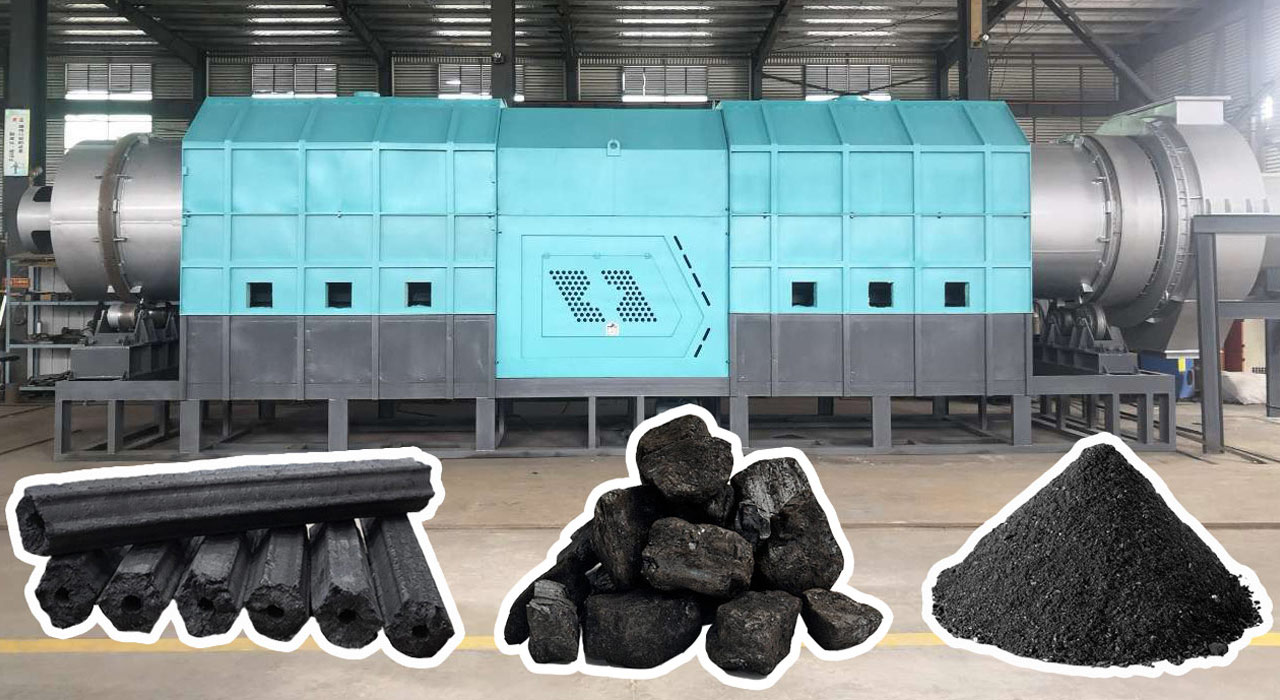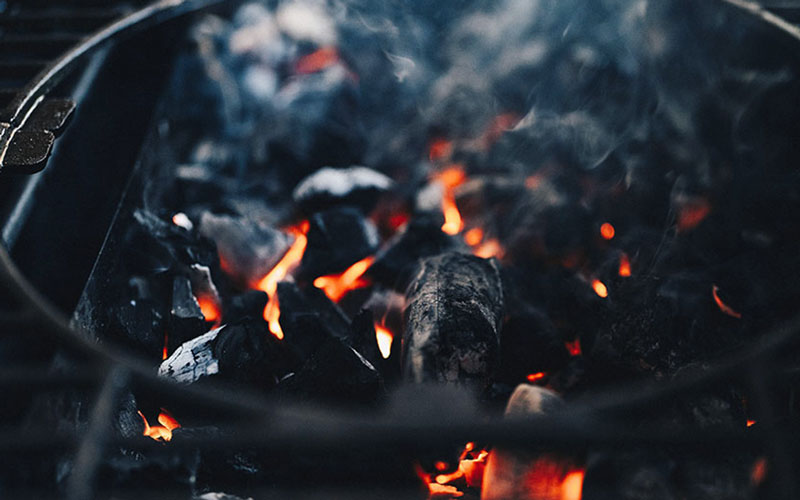Charcoal production is a time-honored tradition that has, for centuries, fueled fires, forged iron, and flavored our foods. The process of crafting charcoal is a meticulously orchestrated ballet of nature and human intervention, resulting in a substance that is more than just fuel – it’s a symbol of resilience and resourcefulness.

The Genesis of Charcoal
In the realm of wood charcoal making machine for production, it all begins with the selection of the right wood. This isn’t just any wood; it’s often the hardwoods, like oak and hickory, that are chosen for their dense, tightly packed fibers. The process aims to reduce the wood to its carbon essence, leaving behind water and volatile compounds.
Charcoal-making involves a slow transformation. Wood is first stacked carefully in a way that allows for efficient combustion. This stack, called a kiln, is where the magic happens. Once the kiln is sealed, it’s time for the initial combustion, known as the “pyrolysis” phase. The wood is heated without the presence of oxygen, and this causes the release of volatile compounds, leaving a charred shell.
Now, it’s time for the kiln to breathe. Oxygen is introduced, and the combustion phase begins. The charred wood is slowly converted into the black gold we know as charcoal. A skillful charcoal producer knows the perfect moment to halt the combustion process – this is where artistry and experience come into play.
A Dance with Fire
The charcoal production process is more art than science. The charcoal maker must be in tune with the kiln, carefully controlling the temperature and oxygen levels. It’s a delicate dance, a choreography of fire and wood, where one wrong step can turn the whole performance into ashes.
The knowledge passed down through generations is crucial. Skills that have been honed over time are what separate a master charcoal producer from an amateur. They can sense when the wood is at its optimal charred state, and they know how to quench the flames at just the right moment.
Sustainability and Charcoal Production
As environmental consciousness grows, so does the importance of sustainable charcoal production equipment. Many traditional methods, like the destructive slash-and-burn techniques, have given way to more responsible practices. Sustainable forestry management ensures that for every tree felled for charcoal production, another is planted, preserving the delicate balance of nature.
The use of sawdust, coconut shells, and other agricultural waste as raw materials has also gained traction. This not only reduces pressure on natural forests but also minimizes waste, making it an eco-friendly alternative in the world of charcoal production.
The Culinary Influence
Charcoal isn’t just about heating; it’s also about eating. The smoky allure of charcoal-grilled cuisine is undeniable. The distinctive flavor it imparts to meats and vegetables is a testament to the culinary importance of charcoal production.
From backyard barbecues to fine dining establishments, charcoal-grilled dishes are sought after for their unique taste. The even, radiant heat of charcoal creates a perfect sear, locking in the juices of the food, while the subtle smokiness enhances the flavor profile.
Charcoal Artistry and Creativity
The influence of charcoal extends beyond the kitchen. It’s a medium for art and creativity. In the hands of skilled artists, charcoal becomes a tool to create stunning pieces. The deep, rich black achieved with charcoal brings out the depth and texture in drawings and sketches.
Charcoal artistry isn’t just about pencils; it extends to other creative avenues. Sculptors use charcoal as a reference tool for preliminary sketches, helping them visualize their sculptures before they embark on the actual carving. The smudgeable nature of charcoal allows for experimentation and adjustments, adding a layer of versatility to the artist’s palette.

The Global Perspective
Charcoal production of carbonization machine varies across the globe, influenced by local traditions and available resources. In some regions, it’s an essential source of livelihood for communities, providing income and employment. In others, it’s a symbol of cultural identity, connecting people to their roots.
The methods of charcoal production can range from simple and traditional earth mounds to large-scale industrial operations. Each approach has its unique characteristics, but the common thread is the transformation of wood into charcoal.
Charcoal Technology: The Modern Twist
While the traditional methods of charcoal production persist, the modern world has introduced innovation into the equation. New technologies and techniques are emerging, making the process more efficient and eco-friendly.
In some cases, retort kilns are used, allowing for the recovery of valuable byproducts, like wood vinegar and tar. These innovations reduce waste and enhance the economic viability of charcoal production.
A Glimpse into the Future
The art of process of biochar production equipment to evolve, shaped by a changing world and the need for sustainability. As more people recognize the value of charcoal in both culinary and artistic endeavors, it remains a bridge between tradition and innovation.
In a world striving for balance, sustainable charcoal production is more crucial than ever. It’s a testament to human ingenuity, our ability to adapt, and the enduring beauty of a time-honored tradition that has stood the test of time.
Charcoal production is more than a craft; it’s a story, a tradition, and a piece of our shared history. In the dance of fire and wood, we find a connection between the past and the future, a glimpse of a world where art, sustenance, and sustainability coexist.